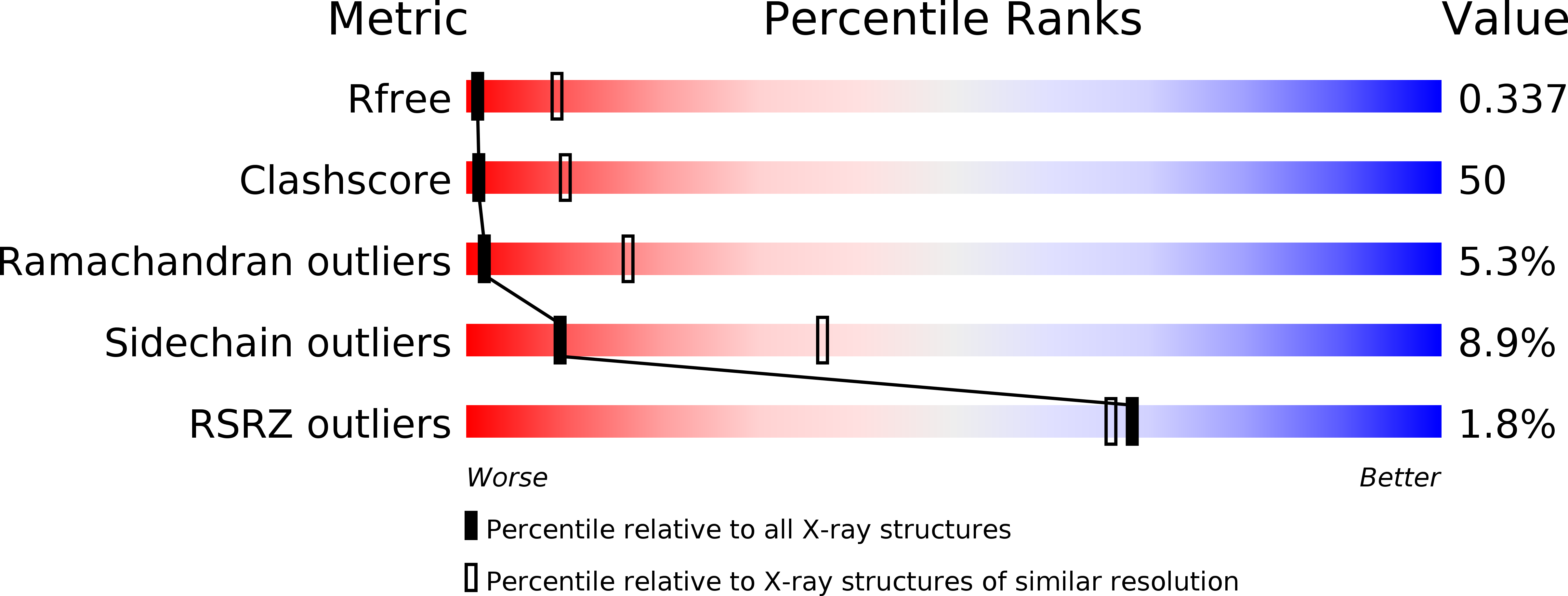
Deposition Date
2009-10-05
Release Date
2010-01-19
Last Version Date
2023-11-01
Entry Detail
PDB ID:
3A7U
Keywords:
Title:
Crystal structure of the bovine lipoyltransferase in its unliganded form
Biological Source:
Source Organism:
Bos taurus (Taxon ID: 9913)
Host Organism:
Method Details:
Experimental Method:
Resolution:
3.44 Å
R-Value Free:
0.31
R-Value Work:
0.24
R-Value Observed:
0.24
Space Group:
P 61 2 2


